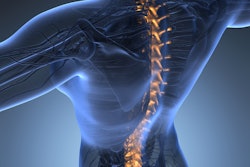Primary care providers (PCPs) want radiologists to include incidental findings from CT imaging in their reports, but they're not very confident in the AI technology that flags these results, researchers have reported.
Key concerns include the accuracy of AI used for this purpose and whether hospitals would be willing to pay for it, wrote a team led by Adam Eltorai, MD, of Brigham & Women's Hospital and Harvard Medical School in Boston. The study was published in the August issue of Clinical Imaging.
"[Our research demonstrates] dissonance between PCP attitudes largely supporting the implementation of clinically actionable [opportunistic CT screening] findings and perceptions that decision-makers are unwilling to pay for this technology," the group noted.
Interest in opportunistic CT screening (OS) has increased in recent years, as it makes way for incidental findings to be used for potential preventive health purposes, the authors explained. CT scans of the chest, abdomen, and pelvis ordered for other indications can "provide data that can be used to detect conditions that could evolve into disease, and such preemptive detection may enable earlier intervention to reduce disease morbidity and mortality," they wrote. AI shows promise for automated anatomic segmentation and quantitative measurement of these kinds of exam results -- which could translate to effective use of OS results, such as evidence of pre-symptomatic cardiovascular disease or bone mineral density quantification.
"[The] detection of such conditions allow for earlier potential preventative or disease-modifying interventions, such as initiating lifestyle modifications, statins, or bisphosphonates," Eltorai and colleagues wrote.
Yet whether PCPs trust AI when it comes to incidental CT imaging findings is unclear. The investigators explored the question via a study that included data from a survey distributed to internal and family medicine residency programs in the U.S.; the team received 71 responses. The survey assessed respondents' familiarity with AI and OS, their perspectives on the potential value and costs of AI and opportunistic CT, and how best to communicate results and implement the AI technology. Of the total study participants, 62% were family medicine physicians, 50.7% were in their first four years of practice, and 64.8% practiced in community hospitals.
[The investigators also noted that there are a number of U.S. Food and Drug Administration (FDA)-cleared, AI-powered OS software offerings on the market, including cmAngio for detecting breast arterial calcification on screening mammography (CureMetrix), qXR for identifying lung nodules on chest x-ray (Qure.ai), and HealthCCSng for flagging coronary artery calcifications on chest CT imaging and HealthOST for detecting low bone mineral density on chest and abdominal CT scans (Nano X Imaging, or Nanox).]
The survey found the following:
- 74.6 % of respondents had heard of AI/machine learning, but only 8.5% had used AI applications in their daily practice.
- 95.8 % had little to no familiarity with opportunistic CT screening.
- 74.6% expressed concerns about the accuracy of AI.
- 91.5% expressed concern that OS would add costs to the patient and 77.5% that it would add costs to the healthcare provider.
- 78.9% stated that OS applications would necessitate radiologist oversight.
- 53.5 % preferred OS results to be included in a separate section within the radiology report, along with condition risks and management recommendations.
- 70.5 % stated that primary care physician practices would be unlikely to pay for OS.
Most survey participants said that opportunistic CT screening results would be likely to affect clinical management. In particular, they said that findings regarding atherosclerotic cardiovascular disease risk, abdominal aortic aneurysm, and liver fibrosis should be included in every CT exam report regardless of the initial reason for it.
"Our study findings show that PCPs believe that being alerted to clinically meaningful imaging findings found through the use of AI and opportunistic screening would impact care management of patients, potentially reducing morbidity/mortality [by] alerting PCPs to imaging manifestations of disease of which they may not be aware," corresponding author Katherine Andriole, PhD, also of Harvard, told AuntMinnie.com. "We [also] found it meaningful that PCPs feel that the radiologist needs to remain in the loop and confirm what AI has detected/predicted."
It's likely that more work is needed to educate PCPs and their hospital's administration about AI-driven OS, Eltorai and colleagues concluded.
"Feasible reimbursement mechanisms, further evidence highlighting the economic value to health systems of OS, and education for healthcare executives about AI may be required for widespread adoption," they wrote. "While randomized clinical trial data are not yet available, OS adoption may be facilitated through educational efforts of AI stakeholders instructing on application use, interpretation of results, and technology limitations."
The complete study can be found here.




















